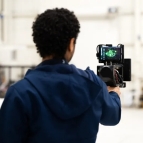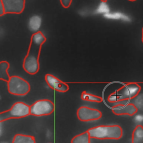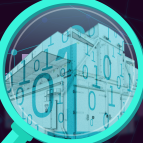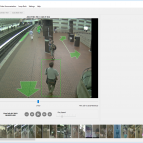Waterways Automated Vessel Information

Security officials tasked with monitoring the nation's border waterways have a lot to take in. Dozens of cameras surveil the waterway, and the video feeds from these cameras are displayed on a wall of monitors that officials watch for suspicious vessels. But vessels are hard to spot among the constant motion of waves and glint, on top of the difficulties in keeping a close eye on multiple streams of footage.
Through our Waterways Automated Vessel Information (WAVI) program, we’re using machine learning algorithms to automatically detect and classify vessels in these video feeds. Our system processes the feed in real time and filters and classifies vessels — discriminating between ferries, fishing vessels, pleasure craft, and jet skis. The system works for both visible and infrared imagery, and is able to make these detections against a moving background as the camera pans.
The system is integrated with a user interface that allows a user to click in to investigate an automatic detection, set boundaries and alerts for areas and vessel types of interest, and track the detection on a map to guide a response. WAVI has been deployed to a border-monitoring location and is being evaluated by users there. We continue to add features as new machine learning techniques enable faster and more accurate identification of vessels, especially for those far in the distance.




